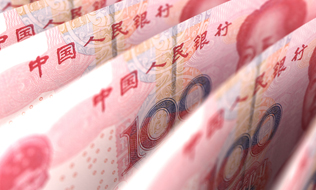
Tensions between China and the United States are heating up as the Trump administration proposed a 10 per cent tariff on $200 billion worth of Chinese goods last week.
The U.S. is hitting China where it hurts, according to an economic insight report from Benjamin Tal, deputy chief economist of CIBC World Markets Inc., and Katherine Judge, economist at CIBC Capital Markets. “Our base case scenario is that China and the U.S. return to the negotiating table as opposed to engaging in a full-blown trade war,” the report noted. ”The global economy and Canada can live with that scenario. The alternative, however, is not so pretty.”
Though the proposed tariff isn’t yet in effect, the $200 billion is key since China doesn’t actually import sufficient goods from the United States to be able to deal a similar blow without making the percentage of its tariff much higher, says Dec Mullarkey, managing director of investment strategy at Sun Life Investment Management.
Read: Looking at investment in China with a long-term lens
As such, China will have to be more creative in any retaliatory efforts going forward, he says. “The obvious thing to do is they will start to penalize [American] companies operating in China,” says Mullarkey. There are many ways to do this, he adds, noting it could have a dramatic effect on equity markets. “A very visible target for China to go after is limiting Apple’s operations in the country,” he says.
Another way China could manipulate or try to offset the U.S.’s proposed tariff would be to purposefully weaken its own currency to make its exports more attractive to the rest of the world, says Mullarkey. This could set off a global chain reaction, which would create a significant market upheaval, he says.
In their report, Tal and Judge agreed with the strategy. They note, as well, that the country could implement a boycott of American brands, regardless of where the products are actually produced. “This could get very visceral,” says Mullarkey.
If implemented, the proposed tariffs will begin affecting the U.S. consumer, which could lead to a serious sentiment shift among Americans, suggests Mullarkey.
Read: Trump and the tariffs: What are the long-term impacts of shifting trade policies?
“That’s the one thing that gets lost on all this modelling on trade . . . the knock-on effects are hard to handicap,” he says. ”These aren’t linear systems. You have the direct effects which most economists get right and you have policy-makers assuming what the effect is going to be. But then you have the second effect where companies start to make adjustments, they start to change the way they operate and they start to onshore more of their production and move it, or whatever the case may be. Then you have the knock-on for sentiment, and then you have consumer getting risk averse and companies stop investing.”
The unpredictable, indirect effects of these proposed trade actions do have the potential to mushroom into an extremely broad risk-averse environmet, leading to a major market sell-off, adds Mullarkey.
Cause for even further uncertainty is that most stakeholders can’t determine the Trump administration’s real end game, he adds. Regardless, it’s no longer a question of [whether] markets are in for a serious correction, but rather when and how big, he says.
“I think most institutional investors on the margin are going to become risk averse. I don’t think they’re going to make wholesale changes, but as they’re putting dollars to work they’re going to shift over into a less risky portfolio,” he says.
Read: What does U.S.-North Korea summit mean for Asia’s investment environment?
But what does risk averse look like in this environment? In the United States, there may be a flight to quality but it’s only a matter of time before trade tensions begin to have a negative effect there, says Mullarkey. Small-cap stocks may actually do well since they’re largely domestic without extensive export noise, he notes. Automobiles, technological hardware, appliances and transportation are the largest sectors set to beimpacted, whereas telecoms, utilities and real estate investment trusts could be good alternatives, he says.
Heading into earnings season, this round will be one to watch, revealing which companies are suffering, says Mullarkey.
Trump pays close attention to equity markets, he notes. And if markets don’t begin to react in a dramatic way heading into the mid-term elections, the president may not see any reason to ease up on imposing tariffs, he adds.
It will be tough for investors to position against this, says Mullarkey. “Take a look at the names you hold that are very dependant on supply chains and make an assessment on the individual names you have, and assess how resourceful or nimble that company is if it needs to make changes,” he advises.
One signal from China that got lost in the shuffle was that it had originally listed airline-related businesses as a target for tariffs but didn’t end up including them, notes Mullarkey. This could be seen as an olive branch, indicating China doesn’t have the appetite to be quite as aggressive as the United States.
Read: Is China becoming more open to institutional investors?
